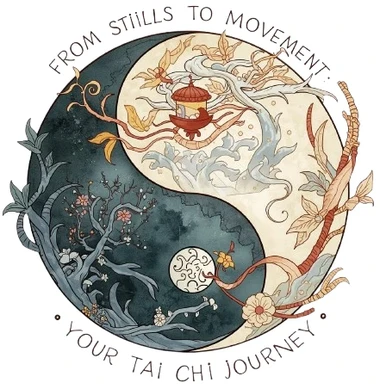That black-and-white swirl—you’ve seen it on T‑shirts, coffee mugs, even tattoos. But here’s the truth: the Yin Yang Tai Chi symbol is only half the story.
It’s not just a cool design. It’s a manual for how the universe breathes, shifts, and renews itself.
And your Tai Chi practice? That’s the living translation of this manual into your body, your breath, and your daily rhythm.
Most people stop at the surface. They think Yin Yang means “balance,” like a 50/50 split. But Tai Chi philosophy tells us something deeper: Yin and Yang are not frozen halves.
They are dynamic, constantly trading places, feeding each other, and transforming. Once you feel that in your practice, you’ll never look at the symbol—or your own movements—the same way again.
So let’s go beyond the symbol.
Let’s step into the living dance of Yin Yang theory, and see how it shapes Tai Chi principles, softness and power in Tai Chi, and even the way you breathe.
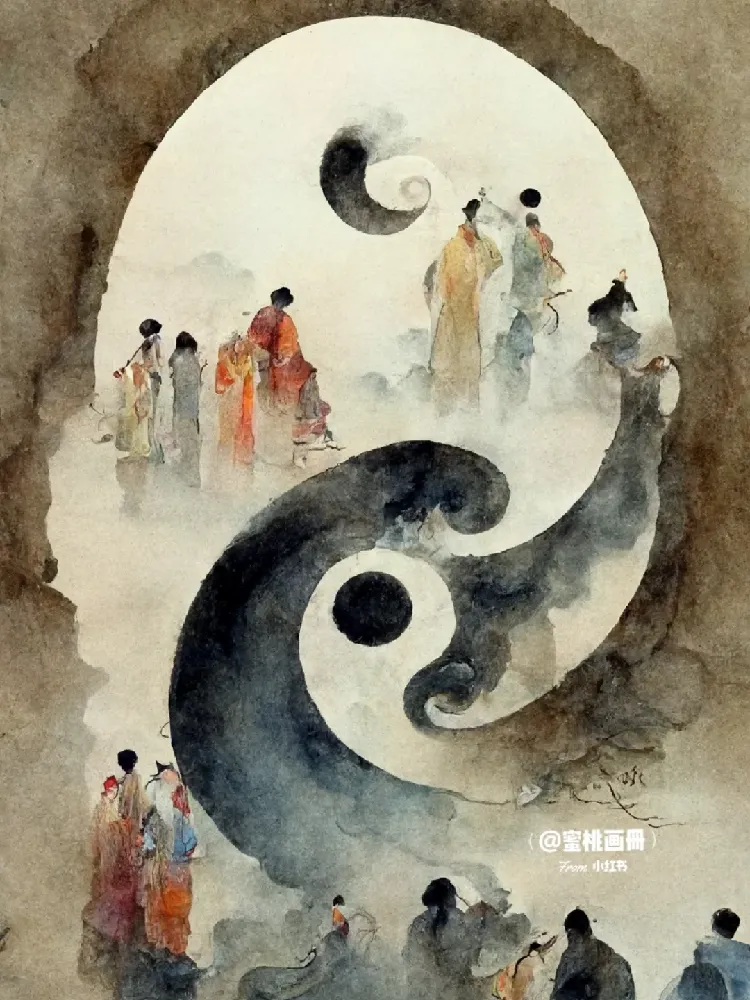
Redefining Yin and Yang: A Dynamic Dance
When I first started Tai Chi, I thought Yin Yang was about stillness.
A perfect balance, like two weights on a scale.
But the more I practiced, the more I realized: Yin and Yang are alive. They’re not statues—they’re dancers.
Here’s what that means:
- Mutual Root: Yin and Yang exist because of each other. No relaxation, no power. No emptiness, no fullness.
- Wax and Wane: They rise and fall like breath. When one grows, the other recedes.
- Transformation: At the extreme, Yin flips into Yang, Yang flips into Yin. Night becomes day, day becomes night.
This is why Tai Chi principles don’t chase a frozen balance. Instead, they seek harmony in motion. Balance in Tai Chi is not a 50/50 split—it’s a living adjustment, like surfing a wave.
💡 Exclusive Tip: Next time you practice, don’t aim for “equal.” Aim for “responsive.” Notice how your weight, breath, and intent shift moment to moment. That’s real Yin Yang Tai Chi.
Yin and Yang in the Body: From Macro to Micro
The balance of Yin and Yang isn't just about external movement but also about the energetic state of the body's internal systems.
- Organ Yin/Yang Balance: How specific Tai Chi movements or breathing exercises can nourish the Yin of the Kidneys (associated with essence, quietness) or balance the Yang of the Liver (associated with movement, anger).
- Meridian Flow: How the concept of emptiness and fullness applies to the circulation of Qi through the meridians. Stagnation (excess, a form of "fullness") or deficiency (lack, a form of "emptiness") in these channels can be addressed through mindful Tai Chi practice, fostering health and energy flow.
- Mind-Body Connection to Internal Health: How the mental focus (Yi) in Tai Chi, guiding the Qi, contributes to harmonizing the Yin and Yang of the internal organs, beyond just physical movement.
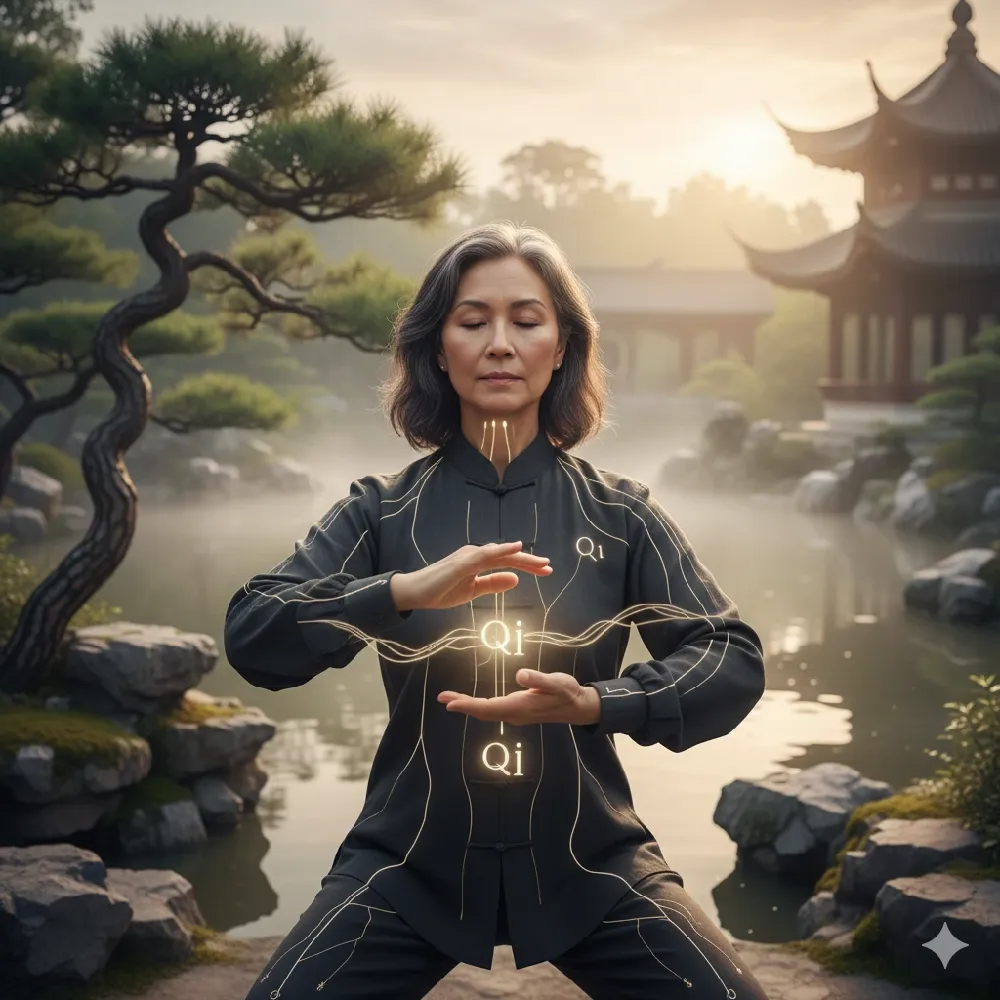
So how does this philosophy land in your body? Let’s decode it step by step.
The Macro Level
Empty and Full (Xu and Shi)
In Tai Chi, we talk about the 100/0 rule. One leg bears the weight (full), the other is light (empty).
- Empty doesn’t mean weak. It means ready, agile, waiting.
- Full doesn’t mean stiff. It means rooted, stable, alive.
Open and Close
Movements expand outward (open, Yang) and then gather inward (close, Yin).
Think of your arms like doors: opening to welcome, closing to protect.
Breath: Inhale and Exhale
Breathing itself is Yin Yang. Inhale draws in (Yin), exhale releases (Yang).
When your breath syncs with your movement, the practice feels effortless.
The Micro Level
Relax and Tense
Absolute relaxation doesn’t exist. Muscles hold a spring-like tone.
This “peng jin” is Yin containing Yang—soft yet ready.
Mind and Energy
Intention (Yi, Yang) leads.
Internal energy (Qi, Yin) follows.
Together, they create flow.
💡 Exclusive Tip: Try this in your next form—shift your weight fully onto one leg, but keep the other leg “alive.” Don’t collapse it. Feel the emptiness as potential, not absence. That’s Yin Yang theory in action.
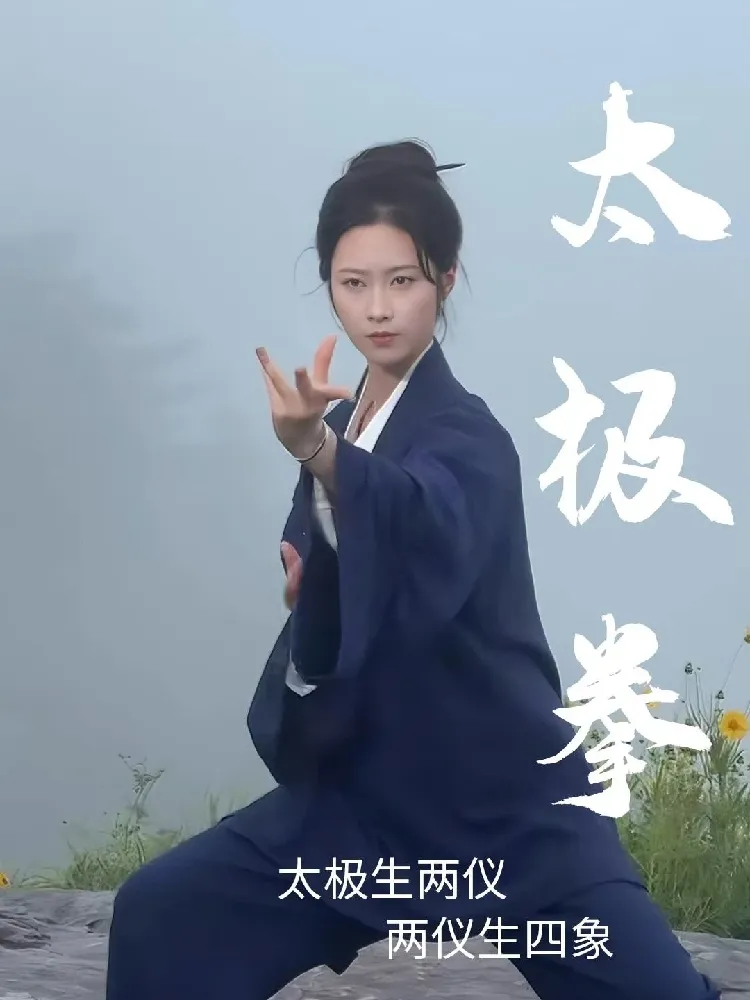
A Closer Look: Yin and Yang in “Grasp the Bird’s Tail”
If Yin Yang Tai Chi is the philosophy, then “Grasp the Bird’s Tail” is the laboratory. This classic sequence shows how Yin and Yang weave through every gesture.
- Peng (Ward Off): Outward expansion, Yang. But inside, the mind sinks, Yin. Yang outside, Yin inside.
- Lu (Roll Back): Looks like yielding, Yin. But hidden within is listening, redirecting, preparing—Yang waiting to emerge.
- Ji (Press): Forward force, Yang. Yet the power comes from the rear leg pushing the ground—Yin turning into Yang.
- An (Push): Downward motion, Yin. Balanced by upward intent through the crown of the head, Yang.
Every move is a conversation. Yin whispers, Yang answers. Yang shouts, Yin softens.
💡 Exclusive Tip: When you practice “Grasp the Bird’s Tail,” don’t just copy the shape. Ask yourself: where is Yin hiding? Where is Yang waiting? That awareness transforms the form into a living dialogue.
Push Hands: The Yin Yang Laboratory
Push hands is not a contest. It’s a dialogue. A way to test Yin Yang Tai Chi in real time. It’s here that the Tai Chi principles of listening and responding become tangible.
- Listening Energy (Ting Jin): This is pure Yin. It’s a quiet, receptive, and highly sensitive state of sensing your partner's intention. It’s not passive; it's the crucial seed from which a precise Yang response grows.
- Neutralizing Energy (Hua Jin): When a partner's force (Yang) comes toward you, the instinct is to meet it with your own Yang. The Tai Chi philosophy teaches the opposite: yield, redirect, and dissolve it. This is Yin absorbing and transforming Yang.
- Issuing Energy (Fa Jin): The magic moment occurs in the gap—when your partner's old force has faded and a new force hasn't yet risen. This transitional space is where Yin turns into Yang. A small, well-timed release (Yang) creates a maximum effect.
💡 Exclusive Tip: In your next push hands session, focus less on "winning." Instead, track the Yin Yang shifts. Notice the exact moment of transformation. That's where Tai Chi principles come alive.
Bringing Yin Yang into Daily Life
The true power of Yin Yang Tai Chi is that it doesn’t stop on the mat. It spills over into how you live, manage stress, and interact with the world, becoming a practice of Tai Chi for harmony.
- Emotions: Don't cling to joy (Yang excess) or sink into sadness (Yin excess). Instead, watch emotions flow like tides, understanding they are transient states in a constant cycle of transformation.
- Communication: Practice listening first (Yin), fully absorbing what is being said, then respond with clarity (Yang). This simple shift can turn combative arguments into harmonious dialogues.
- Work and Rest: Push hard when your energy is high and focused (Yang). Rest deeply and without guilt when you are tired (Yin). Fighting fatigue only drains you further. Flowing with your natural rhythm restores you.
💡 Exclusive Tip: Tonight, when you feel tired, don't fight it with caffeine. Instead, lean into Yin—rest, breathe, reset. Tomorrow, your Yang will be stronger and more sustainable.
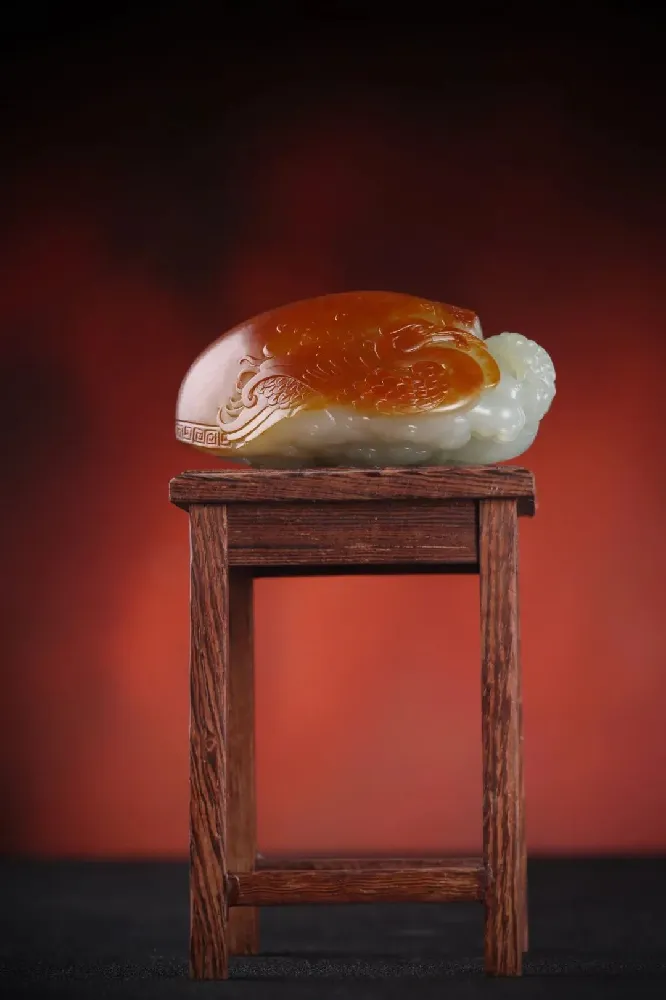
Wu Ji: The Stillness Before the Dance
Before Yin and Yang, there is Wu Ji. Imagine standing quietly, feet shoulder-width apart, arms relaxed, breath soft. No movement. No division. Just pure, undifferentiated potential.
- Wu Ji Posture: In practice, this is the foundational starting stance. It's where we cultivate a calm mind, a grounded body, and an upright spine.
- Philosophical Meaning: Wu Ji represents the state of oneness, the primordial void from which all things arise. It is the silence before the first note of music.
- Transition to Tai Ji: The moment you shift your weight, Yin and Yang are born. One leg becomes full (Yang), the other empty (Yin). This is the emergence of Tai Ji from Wu Ji.
💡Exclusive Tip: Spend a full minute in Wu Ji stance before starting your form. Don't rush. Let your body and mind settle. Notice how this stillness itself feels alive and full of potential. That's the seed of all that follows.
The Misunderstanding of “Softness”
People often mistakenly say Tai Chi is "soft." That's only half true. Softness without underlying structure collapses. Power without softness is rigid and brittle.
Real Tai Chi power is the seamless integration of softness and power in Tai Chi:
- Softness (Yin): Absorbs, adapts, and listens.
- Power (Yang): Directs, expresses, and completes.
Think of bamboo. It bends gracefully in the wind (Yin) but does not break. Its immense strength is derived from its flexibility. This is the essence of softness and power in Tai Chi.
💡 Exclusive Tip: Next time you practice, imagine your arms as bamboo—flexible yet strong, rooted yet yielding. This mental image alone can profoundly change the quality of your movement.
Yin Yang in Emotions: A Hidden Practice
Tai Chi philosophy doesn’t stop at the body. Yin Yang theory also provides a powerful framework for how you handle your inner world.
- Joy is Yang: bright, expansive, uplifting.
- Sadness is Yin: heavy, inward, contemplative.
The practice is not to cling to one or resist the other, but to notice their natural flow.
Joy will eventually fade, sadness will shift. Both contain the seed of the other and both will transform.
This is Tai Chi for harmony applied to your emotional life.
Advanced Layer: Yin Yang in Timing
Beyond direction and force, Yin Yang theory governs the subtle art of timing.
This is where Tai Chi principles elevate from physical movement to strategic wisdom.
- Too Early (All Yang): If you respond before fully perceiving the incoming force, it becomes Yang crashing into Yang—a crude clash of force against force.
- Too Late (All Yin): If you wait too long, your yielding becomes a collapse. You are overrun without the space to generate a response—Yin dissolving without purpose.
- Just Right (The Transformation): The mastery lies in allowing the Yin phase (receiving and neutralizing) to fully complete its process, thereby creating the perfect, effortless moment for Yang (issuing) to emerge. This is the application of Yin Yang in push hands at its highest level.
💡 Exclusive Tip: In your solo practice, consciously pause at the turning points between movements. Notice the exact, fleeting moment when receptivity (Yin) becomes expression (Yang). This awareness sharpens your timing in every aspect of practice.
Case Studies: Yin Yang in Real-Life Practice
Case Study 1: The Overachiever (Too Much Yang)
David was strong and competitive. He approached Tai Chi with sheer force, muscles tense, believing it was about overpowering.
He hit a wall: sore knees, stiff shoulders, and frustration. His practice was all fire (Yang), no water (Yin).
The Shift: When he learned to slow down, soften his stance, and let Yin guide his movements, his practice transformed. His power became rooted and sustainable, proving that Yin is the foundation of true strength.
Case Study 2: The Gentle Soul (Too Much Yin)
Mei loved the fluid grace of Tai Chi. Her movements were beautiful but lacked grounding. In push hands, she was easily uprooted because she yielded endlessly without ever expressing direction (Yang).
The Shift: By learning to ground her stance and issue energy at the right moment, she discovered that Yang is not aggression, but clarity and completion. Her practice found its backbone.
Common Misconceptions and Gentle Rebuttals
Myth #1: Yin Yang Means a 50/50 Balance
This is the most common misunderstanding. Balance in Tai Chi is not a static, equal split. It is a dynamic, living adjustment—like riding a bicycle, constantly making micro-corrections to stay upright. It's a harmony in motion, not a frozen pose.
Myth #2: Yin Is Weak, Yang Is Strong
This is a profound error. Yin is not weakness; it is receptive, adaptive, and powerful in its capacity to absorb and contain. Yang is not brute force; it is expressive, decisive, and life-giving. Both are essential and potent. Water (Yin) carves canyons; sunlight (Yang) nurtures forests.
Myth #3: Tai Chi Is Just Slow Exercise
The slowness is a deliberate magnifying glass. It allows you to observe and feel the Yin Yang shifts with exquisite clarity. This slow, mindful training builds the neural pathways and body awareness that allow the principles to be applied effectively at any speed, which is the source of a master's explosive power.
A Personal Reflection: Becoming the Symbol
I’ll never forget the evening it all clicked. After years of practice, I was walking home through the noisy, flashing city.
But inside, I felt a profound calm. My steps were rooted yet light, my breath steady.
I realized I wasn't just "doing" Tai Chi anymore. Every step was a weight shift from Yin to Yang, every breath was a cycle of completion.
I was being Tai Chi.
This is the real gift. Tai Chi for harmony doesn't just change how you move; it changes how you inhabit your life.
You stop chasing balance and start embodying it.
Conclusion: You Are Walking Tai Chi
That black-and-white swirl is not just ink on paper or a design on a mug. It is you.
When you listen patiently, you are Yin.
When you act with clarity, you are Yang.
When you flow effortlessly between the two, you are Tai Chi.
The symbol is not outside of you. It is alive in your body, your breath, and your daily choices. You are the living expression of Tai Chi philosophy.
Warm Encouragement:
If you've ever felt Tai Chi was too abstract, I hope this journey has shown you otherwise. Yin Yang theory is not a philosophy locked in ancient books; it is a practice you can feel in your bones. And if you've ever doubted yourself—thinking you're too stiff, too busy, or too old—remember this: Tai Chi meets you exactly where you are. Every stumble, every moment of awareness, and every breath is part of the beautiful, ongoing dance.
Ready to feel the philosophy in your bones?
- Join our "Principles in Motion" course at the Taichi Academy. We break down the Yin and Yang of every major form, transforming your practice from the inside out with expert guidance.
- Prefer to start small? Download our FREE "Yin-Yang Practice Guide." This beautifully designed PDF maps these powerful concepts onto common postures for your daily practice.
Your softness is your strength. Your awareness is your power. Let's unlock it—together.
FAQ: Yin and Yang in Tai Chi
What is the meaning of Yin Yang in Tai Chi?
Yin Yang in Tai Chi is not just a static symbol. It represents the constant flow of opposites—softness and power, emptiness and fullness, inhale and exhale. Tai Chi philosophy teaches that balance in Tai Chi is dynamic, not frozen.
How does Yin Yang theory shape Tai Chi principles?
Mutual root: Relaxation (Yin) gives rise to power (Yang). Transformation: At extremes, Yin flips into Yang, Yang flips into Yin. Application: Every Tai Chi principle—rooting, breathing, intention—follows this rhythm.
What is Wu Ji and how does it relate to Tai Ji?
Wu Ji is the stillness before movement, the undivided state. Tai Ji begins when Yin and Yang separate. Understanding Wu Ji and Tai Ji helps practitioners see Tai Chi not as random moves but as a living cycle of stillness and motion.
How do I apply Yin Yang in Tai Chi practice?
Weight shifting: One leg full (Yang), the other empty (Yin). Breath: Inhale (Yin), exhale (Yang). Forms: In “Grasp the Bird’s Tail,” Peng is Yang outside but Yin inside; Lu is Yin outside but Yang hidden within.
What is the role of Yin Yang in push hands?
Push hands is the laboratory of Yin Yang in Tai Chi. Listening (Ting Jin): Yin, receptive. Neutralizing (Hua Jin): Yin dissolving Yang. Issuing (Fa Jin): Yang expressed at the perfect Yin-Yang transition.
How does Tai Chi balance softness and power?
Softness in Tai Chi is not weakness. It’s adaptive strength. Power without softness is rigid; softness without power collapses. True Tai Chi power is Yin and Yang together—like bamboo, flexible yet unbreakable.
Can Yin Yang Tai Chi improve harmony in daily life?
Yes. Tai Chi for harmony extends beyond the mat: Emotions: Don’t cling to joy (Yang) or sink into sadness (Yin). Communication: Listen first (Yin), then respond (Yang). Work and rest: Push when energy is high (Yang), rest deeply when tired (Yin).
Is Yin Yang theory just philosophy, or is it practical?
It’s practical. Yin Yang in Tai Chi is embodied: shifting weight, breathing, yielding, issuing. It’s not abstract—it’s muscle memory.
What are common misconceptions about Yin Yang in Tai Chi?
Myth: Yin Yang means 50/50 balance. Myth: Yin is weak, Yang is strong. Myth: Tai Chi is just slow exercise. Myth: Yin Yang is only metaphor.
How can beginners start applying Yin Yang in Tai Chi?
Begin with Wu Ji stance: stillness before movement. Notice empty and full in each step. Sync breath with motion. Ask: where is Yin hiding, where is Yang waiting?
What is the connection between Yin Yang and Tai Chi philosophy?
Tai Chi philosophy is built on Yin Yang theory. Every principle—rooting, intention, Qi flow—reflects the interplay of opposites. Without Yin Yang, Tai Chi is just choreography. With it, Tai Chi becomes living philosophy.
How does Yin Yang appear in advanced Tai Chi practice?
Timing: Issuing force at the exact Yin-Yang transition. Wu Wei: Effortless action, aligning with natural flow. Meditation: Inhale (Yin), exhale (Yang), even in stillness.
